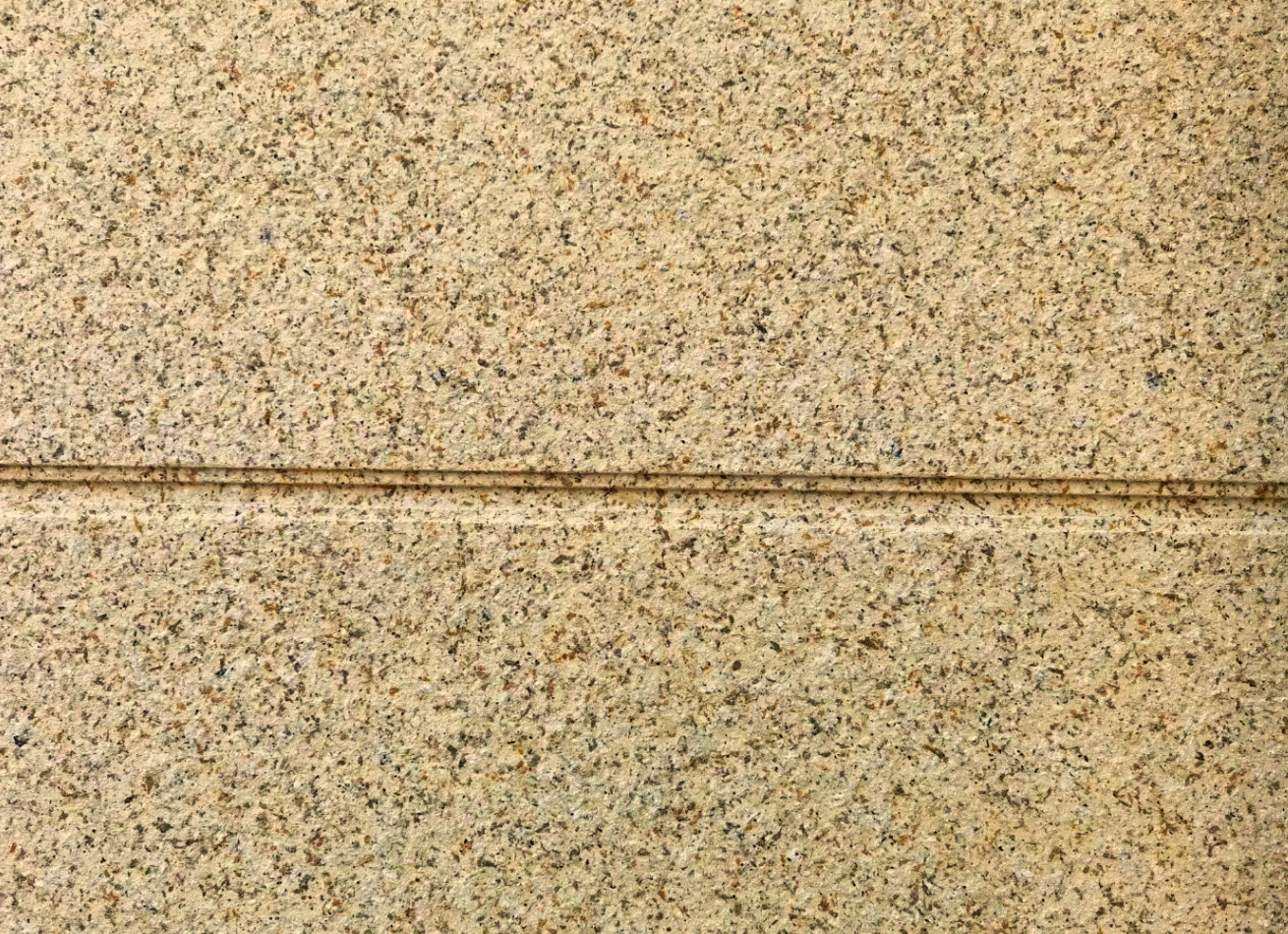Comparison of the Advantages and Disadvantages of Stone-Effect Exterior Coatings and Tiles
In summary, stone-effect exterior paint and tiles both have their own strengths and weaknesses. Stone-effect paint offers high safety, convenient application, rich colors, and is suitable for various building types including high-rises. However, it has poorer stain resistance and lower gloss. Tiles provide excellent stain resistance and high gloss but pose safety risks due to potential falling, have a shorter lifespan, and are more complex to install and renovate. The choice between them should be based on specific project requirements, budget, and desired aesthetic effects.

Comparison of the Advantages and Disadvantages of Stone-Effect Exterior Paint and Tiles
Text Description
I. Stone-Effect Exterior Paint
- Advantages
- High Safety: Stone-effect exterior paint is lightweight. Even if there is local falling off during long-term use, it will not fall off in large pieces like tiles, thereby greatly reducing the risk of causing harm to pedestrians and the surrounding environment.
- Convenient Construction: The construction process is relatively simple, usually using spraying and other processes, which can quickly cover a large area of the wall, greatly shorten the construction period, and is especially suitable for large-scale construction projects, effectively reducing labor costs and time costs.
- Rich Colors and Textures: It can be mixed into a variety of colors according to design requirements and can imitate the texture and texture of natural stone, such as granite, marble, etc., providing rich expressiveness for the appearance of buildings and meeting the needs of different styles and grades of buildings.
- Long Service Life: With normal use and maintenance, it can generally be used for about 15 years and has good weather resistance to withstand the erosion of natural factors such as ultraviolet rays and wind and rain.
- Good Waterproof Performance: The material itself has certain waterproof properties, which can effectively prevent water from penetrating into the interior of the wall, thereby reducing the occurrence of internal wall seepage and helping to protect the integrity of the building structure.
- Easy Renovation: When it reaches the service life and needs to be renovated, only simple treatment of the base layer is needed, such as cleaning surface stains and repairing damage, and then secondary surface construction can be carried out, without the need for large-scale demolition work like tiles, greatly reducing the difficulty and cost of renovation.
- Wide Application Range: It can be applied to various industrial and civil buildings, whether it is multi-storey buildings or high-rise buildings, as well as some buildings with complex curved surfaces, it can adapt well and provide greater flexibility for building design.
- Disadvantages
- Poor Stain Resistance: The stain resistance of stone-effect exterior paint is relatively weak. Especially in parts that are prone to contact with dust, oil stains and other pollutants, such as skirting boards, it is easy to have stains that are difficult to clean. Regular cleaning and maintenance are needed, otherwise it will affect the overall effect of the building’s appearance.
- High Construction Requirements: High requirements for construction technology and the technical level of construction personnel. If the construction is not uniform, it may appear white, flowering and other phenomena, affecting the decorative effect of the paint. In addition, the temperature, humidity and other factors of the construction environment will also affect the performance and construction quality of the paint.
- Quality Varies: There are large differences in brands and quality of stone-effect exterior paint on the market. If you purchase a product of poor quality, it may cause problems such as cracking and fading of stone paint, thereby losing its decorative effect and even affecting the service life of the building.
- Low Gloss: Compared with tiles, the gloss of stone-effect exterior paint is relatively weak and cannot reach the mirror-like effect of tiles. For some designs that pursue high-gloss building appearance, it may not be the best choice.
- Price Difference: Although the overall price of stone-effect exterior paint is relatively low compared to tiles, the price of high-quality stone paint may be relatively high. In addition, labor costs and other factors need to be considered during the construction process, and the comprehensive cost may increase.
II. Tiles
- Advantages
- Good Stain Resistance: The surface of the tiles is smooth and has good stain resistance. It has relatively weak adhesion to pollutants such as dust and oil stains, is easy to clean and maintain, and can keep the appearance of the building clean and beautiful for a long time.
- High Gloss: Tiles have high gloss, which can reflect light, making the appearance of the building brighter and cleaner, giving people a high-end and delicate feeling, and is especially suitable for places with high requirements for the appearance of buildings.
- Clear Construction Requirements: The construction technology of tiles is relatively mature, and the technical requirements for construction personnel are relatively clear. As long as the construction is carried out in accordance with the specifications, the construction quality can be guaranteed to avoid problems such as hollow drums and falling off.
- Stable Quality: The quality of tiles is relatively stable. After strict quality inspection and control, its performance and appearance quality can be guaranteed. Consumers can choose according to brands and quality standards, reducing the risk of use caused by quality problems.
- Disadvantages
- Low Safety: Tiles are strong and hard, but they also have the risk of falling off. Once they fall off, they may cause serious harm to pedestrians and the surrounding environment. In particular, the risk of falling off tiles in high-rise buildings is greater. Therefore, in some areas, the use of tiles on the exterior walls of high-rise buildings is prohibited.
- Complicated Construction: The construction process is relatively complicated, requiring multiple steps such as base treatment, tile bonding, and grouting. The construction efficiency is low, and the technical level and experience of construction personnel are required. If the construction is not proper, it is easy to have problems such as hollow drums and falling off, which affects the service life and decorative effect of the tiles.
- Short Service Life: The service life of tiles is generally about 10 years. Compared with stone-effect exterior paint, its service life is relatively short and needs to be repaired and replaced more frequently.
- Poor Waterproofing: Although tiles themselves have certain waterproof properties, during use, due to the gaps between tiles and the bonding layer between tiles and the base layer, water seepage is likely to occur, resulting in internal wall dampness, mildew and other problems, affecting the service life and living environment of the building.
- Difficult Renovation: When tiles reach the end of their service life and need to be renovated, a large amount of manpower, material resources and time are needed for demolition work. Moreover, the demolition process may cause certain damage to the building base, increasing the difficulty and cost of renovation.
- Limited Application Range: In high-rise buildings and some buildings with complex curved surfaces, the application of tiles is limited. Because they are heavy, they have high requirements for the load-bearing capacity of building structures, and it is difficult to ensure construction quality and decorative effects on complex curved surfaces.
- High Price and Construction Costs: The price and construction costs of tiles are relatively high, especially for high-quality tiles and professional construction teams, the costs are higher, which to some extent increases the construction cost of the building.
Comparison Table
| Item | Stone-Effect Exterior Paint | Tiles |
|---|---|---|
| Safety | High, lightweight, not prone to large pieces falling off | Low, strong and hard, prone to large pieces falling off |
| Construction Convenience | High, fast construction speed, high efficiency | Low, complex construction process, low efficiency |
| Colors and Textures | Rich, can be mixed into a variety of colors, imitating stone texture | Limited, relatively monotonous colors and textures |
| Service Life | About 15 years | About 10 years |
| Waterproof Performance | Good, material itself is waterproof | Poor, prone to seepage |
| Renovation Difficulty | Low, easy for secondary construction | High, need to remove old tiles |
| Application Range | Wide, suitable for multi-storey, high-rise and complex curved surface buildings | Limited, restricted in high-rise buildings and complex curved surface buildings |
| Stain Resistance | Poor, easy to stain, difficult to clean and maintain | Good, smooth surface, easy to clean |
| Gloss | Low, relatively weak gloss | High, high gloss, strong light reflection |
| Construction Requirements | High, high requirements for construction technology and personnel | Clear, mature construction technology |
| Quality Stability | Poor, product quality on the market varies | Good, relatively stable quality |
| Price and Construction Costs | Low, but high-quality products are more expensive | High, high price and construction costs |
In summary, stone-effect exterior paint and tiles each have their own advantages and disadvantages. When choosing, it is necessary to comprehensively consider factors such as the specific building project requirements, budget, design style, and usage environment to select the most suitable exterior wall material.
